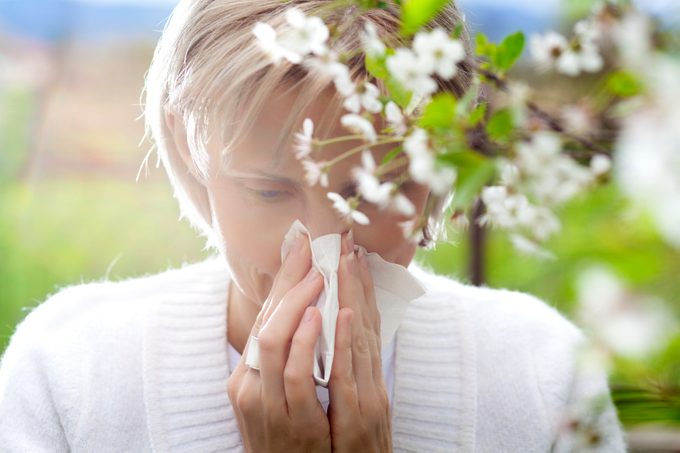Top Tips for Spring Allergies
Seasonal allergies make millions of Canadians miserable each spring. Take action with simple tips to reduce your exposure to allergens

Achoo! Spring has sprung
Sneezing, runny nose, congestion, coughing and itchy, watery red eyes’yup, it’s hay fever time again. If you’re sniffling, you’re not alone’as many as one in five Canadians has seasonal allergies, or allergic rhinitis. You can blame springtime’s blooming trees, grasses and weeds, which release pollen into the air. Try these steps to avoid these allergens and relieve your symptoms.
Avoiding pollen outdoors
Plants release pollen early in the morning, so try to schedule activities after 10 a.m. Check the weather forecast for the predicted pollen count’if it’s high, take allergy medication before symptoms start. Dry, windy days are bad news; if you can, stay indoors.
Wearing glasses or sunglasses helps keep pollen out of your eyes. If you drive, turn on the air conditioning to filter out pollen. When you get home, remove your shoes and change clothes to avoid spreading pollen. Don’t dry your laundry outside.
Ask someone without allergies to handle outdoor chores like lawn mowing and raking. If you must work outside, put on a mask.
Reducing pollen exposure at home
The key is to keep pollen where it belongs’outdoors! Close windows and doors, especially at night and when pollen counts are high. Turn on the air conditioning to remove pollen; high-efficiency filters are best, and be sure to keep the system in good working condition. An air purifier can also help. Look for a model with a high-efficiency particulate air (HEPA) filter and run it in your bedroom.
Cleaning your home frequently helps control allergens including pollen, dust and pet dander. Many vacuum cleaners come with a HEPA filter.
Get relief with allergy medications
Over-the-counter medications can reduce allergy symptoms. Oral antihistamines help against sneezing, a runny nose and watery eyes. Ask your pharmacist about newer-generation antihistamines, which don’t cause drowsiness.
Decongestants, available in pills and nasal sprays, offer relief from a stuffed-up nose. (Sprays are a short-term remedy; using them for more than a few days in a row can cause ‘rebound congestion,’ which is worse.)
Drugstores have products that combine an antihistamine with a decongestant. Eyedrops containing both ingredients relieve red, watery, itchy eyes.
If you need stronger treatment, an allergist can perform skin or blood tests to determine your exact allergens. Allergy injections (allergen immunotherapy) may be an option. They aren’t a cure, but they can reduce symptoms.
Allergy remedies to try at home
For symptom relief, you can also try this home remedy: rinse out your nasal passages with a sterile saline (salt-based) solution. Pharmacies and health food stores sell plastic bottles or neti pots for this purpose. Nasal irrigation takes some getting used to, but it will help flush out allergens and loosen mucus so you can breathe easier.
Talk to your pharmacist
Pharmacists can answer questions and help you choose over-the-counter allergy medications. In some provinces, pharmacists can also prescribe treatments for minor ailments.




